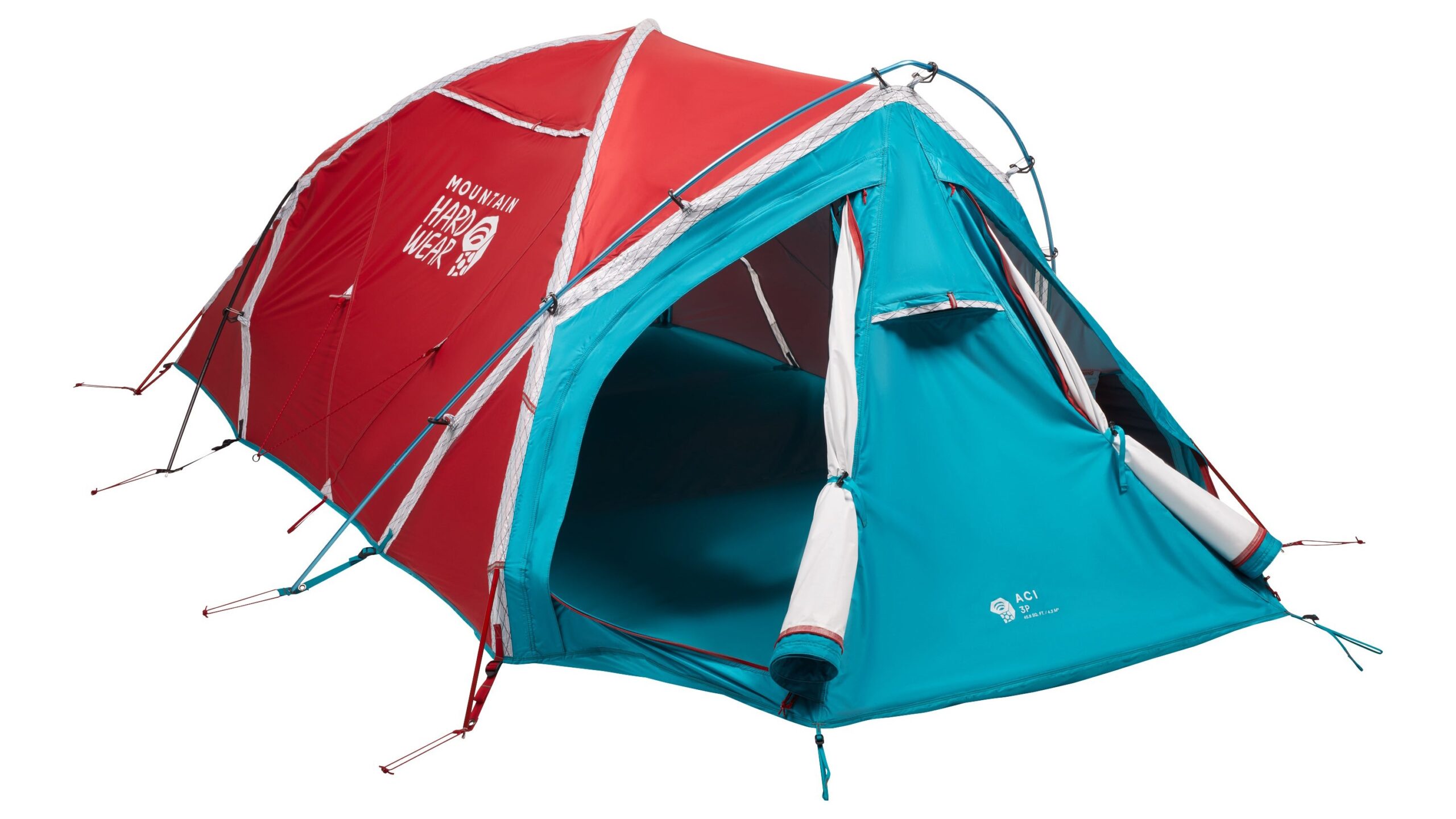This year marks Mountain Hardwear’s 25th anniversary, but that’s not the only major milestone for the brand: with its Spring 2019 line of redesigned and new tents, it becomes the largest player in U.S. tents to completely eliminate toxic fire-retardant chemicals from its shelters—for good.
“One of our core values is environmental optimism, and we evaluated where we could do better,” said president Joe Vernachio. “Fire retardancy chemicals rose to the top. We don’t like them in the finished product, but we’re more concerned about the workers who have to apply them.”
That’s because common flame retardant compounds have been linked to a host of serious health issues. A 2016 Duke University study found that the chemicals used in backpacking tents have direct links to cancer, altered hormone function, and neurological problems. Exposure doesn’t take much, either: the scientists detected flame retardants in the air inside the tents and on the hands of volunteers who set them up.
Still, the vast majority of camping and backpacking tents on the market are doused in the stuff, in large part thanks to a 1972 standard by the Canvas Products Association International known as CPAI84. Created to address the fire risk in large event tents, the standard (which is adopted by individual states, not federally mandated) grew out of a 1944 circus tent fire that killed 167 and injured 700. The scope broadened in the ’80s to include all tents, including camping shelters. Currently, California, New Jersey, Louisiana, Minnesota, and Canada adhere to the standard—and because California is such a huge market, brands often follow its regulations for all their products.
So Mountain Hardwear’s stand is a bold move: by nixing fire retardants, the brand can’t legally sell its tents in those places.
Mountain Hardwear hopes the move will inspire the rest of the market to follow suit. But the choice isn’t as simple for smaller brands, which might not have the financial ability to remove individual states from their distribution systems.
Some larger brands have been working on the problem since 2015, when the Outdoor Industry Association (OIA) formed a working group with companies like Big Agnes, MSR, and NEMO. This OIA Flame Retardant Task Force aims to update the standards to better reflect the 21st century, or better yet, match the European standards that don’t require such chemicals at all. But as with all legal changes, the red tape is time consuming and costly. “Regulations that have been on the books for a long time are almost harder to remove because there is an inherent fear of the risk,” said Jessie Curry, manager of sustainable business practices at OIA. (As of May 2019, Health Canada was also in the process of updating its regulations).
In the meantime, Mountain Hardwear is forging ahead (joining Fjällräven and NEMO, which both also offer tents without flame retardants). “I understand that any majority tent brand is likely to look at the risk and say ‘I might go out of business if people don’t come along,’” Vernachio said. “But I’m a firm believer of core values, regardless of the result. To effect change, someone has to take the risk to lead.”


